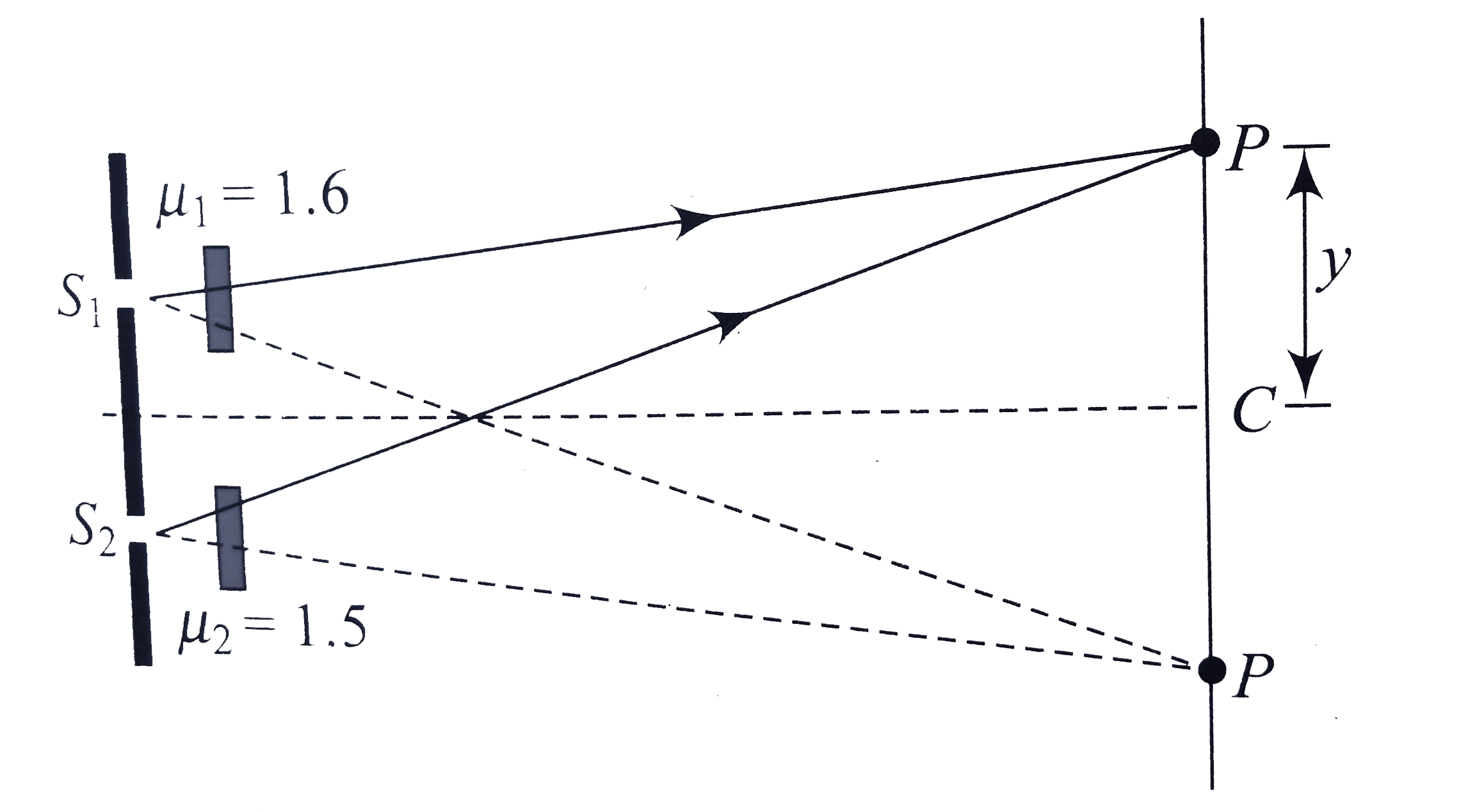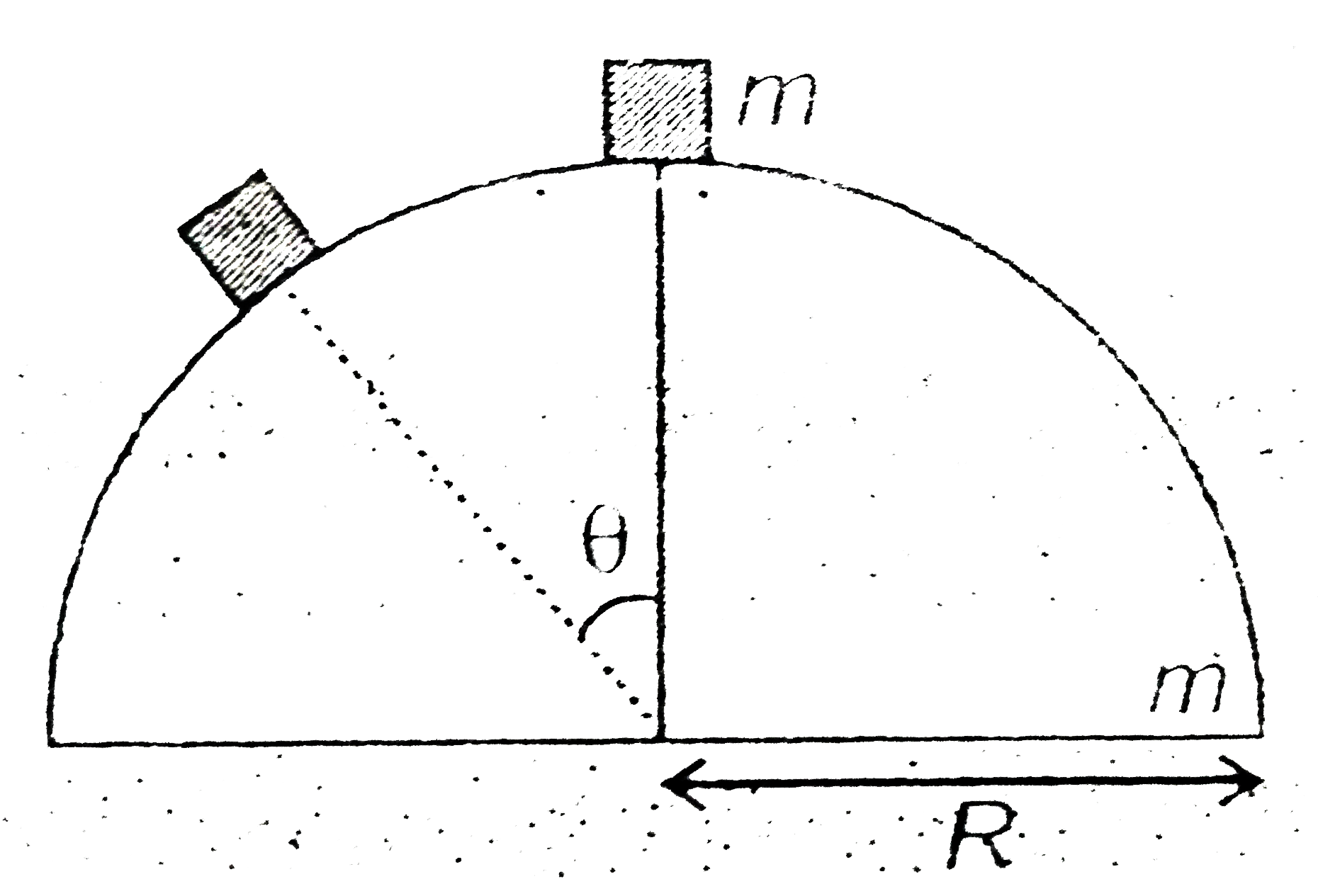In the Young's double-slit experiment, the amplitude os source S1 is three times the amplitude of the source S2. These sources are covered by perfectly transparent thin plates of same thickness but different refractive indices 1.6 and 1.5, respectively. Now, if the plates are interchanged and the amplitude of source S1 is made same as that of S2, then find the amout by which the intensity is changed at a point where previous central maxima was formed. Take thickness of the plate equal to (110/3)λ, where λ is the wavelength of light used.

The correct Answer is:116
Ratio of intensities of the sources S1 and S2,
I1I2=9
Let I2=I0 and I1=9I0.
Intensity at any point on the screen.
I=9I0+I0+2√9I0I0cosγ
For maxima at P,
I=2I0[5+2]=16I0
If transparent plates are interchanged, the central maxima will shift downward by some amout j.
j=Dt(μ1−μ2)d
Δxp=ydD+t(μ2−μ1)=0
⇒ydD=t(μ1−μ2)
When μ2 and μ1 are interchanged
Δxp1=ydDt(μ1−μ2)=2t(μ1−μ3)
Phase diffenence at P,
ϕ=2πλ2(μ1−μ2)t=443π
Now, intensity at P,
I'=I+I0+2I0cos(443)π−I0
Hence, ratio of intensities at P,
I'I=I016I0=116
Topper's Solved these Questions
- BOOK - CENGAGE PHYSICS ENGLISHCHAPTER - WAVE OPTICSEXERCISE - Single Correct128videos
WAVE OPTICS
- BOOK - CENGAGE PHYSICS ENGLISHCHAPTER - WAVE OPTICSEXERCISE - Multiple Correct8videos
WAVE OPTICS
- BOOK - CENGAGE PHYSICS ENGLISHCHAPTER - WAVE OPTICSEXERCISE - Exercise 2.222videos
WAVE OPTICS
- BOOK - CENGAGE PHYSICS ENGLISHCHAPTER - SOURCES OF MAGNETIC FIELDEXERCISE - single correct Ansewer type12videos
SOURCES OF MAGNETIC FIELD
Similar Questions
In Young's double slit experiment, the ratio of maximum and minimum intensities in the fringe system is 9:1 the ratio of amplitudes of coherent sources is
View SolutionIn a Young’s double slit experiment, the source illuminating the slits is changed from blue to violet. The width of the fringes
View Solution
Knowledge Check
- Question 1 - Select One
In a Young's double slit experiment, the source is white light. One of the holes is covered by a red filter and another by a blue filter. In this case
Athere shall be alternate interference patterns of red and blueBthere shall be an interference pattern for red distinct from that for blueCthere shall be no interference fringesDthere shall be an interference pattern for red mixing with one for blue.
In Young’s experiment, the ratio of maximum to minimum intensities of the fringe system is 4:1. The amplitudes of the coherent sources are in the ratio
View SolutionIn Young.s double slit experiment intensity at a point is (1/4) of the maximum intensity. Angular position of this points is
View SolutionIn a Young's double slit experiment, the source is white light. One of the holes is covered by a red filter and another by a blue filter. In this case
View SolutionA particle is placed on the top of a hemispherical shell of same mass. Shell is free to move on the smooth ground. If particle is given a given a gentle push and reaches to angular position q as shown in figure then for an observer fixed on a shell, ratio of reaction force exerted by shell to pseudo force (as observed from shell) acting on particle, is
 View Solution
View SolutionIn Young's double-slit experiment, the ratio of intensities of a bright band and a dark band is 16:1. The ratio of amplitudes of interfering waves will be
View SolutionIn a Young.s double slit experiment, the fringes are displaced by a distance x when a glass plate of refractive index 1.5 is introduced in the path of one of the beams. When this plate is replaced by another plate of same thickness, the shift of fringes is (3/2)x. The refractive index of second plate is
View SolutionIn a young 's double slit experiment, a glass plate of refractive index 1.5 and thickness 5×10−4 cm is kept in the path of one of the light rays. Then
View Solution

